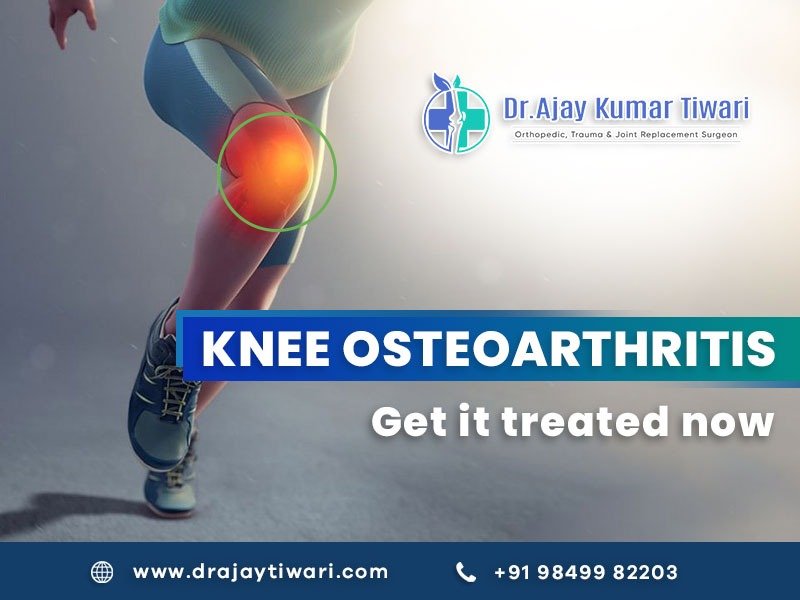
An overview of ACL Injury
The ACL – Anterior Cruciate Ligament is a rigid tissue that joins the thigh bone(femur) and shinbone of the knee. The function of the ACL is to prevent extreme forward movement of the shinbone – Tibia located in front of the thigh bone and also helps to provide rotational stability to the knee.
It also helps in preventing hyperextension of the knee (a straightening movement of the knee joint other than the regular range of motion). By avoiding these dangerous motions of the knee joint, the ACL can provide stability and dynamic movements of the knee joint.
By any means, if this ligament gets damaged, then it is said to be ACL Injury or ACL tear. Anyone can encounter an ACL tear, but mostly they are seen in athletes because they occur due to sudden movement changes when they play different sports like football, cricket, basketball, badminton, tennis etc. Do you know, women are 2-10 times more prone to suffer from ACL tears compared to men.
In most of the anterior cruciate ligament injuries, if the ligament inside your knee is completely torn, restoration is inevitable because these ligaments can’t heal themselves. Surgical repair of the ligament is the only possible way is to gain the full range of motion of the knee. In some cases, it might be a small sprain which can be managed through physical therapies.
What Causes ACL Tears?
ACL injuries might result in a full tear or a sprain( partial ACL tear) with varying degrees. Athletes who are involved in playing active sports are mostly victims of these ACL tears. There are various causes for an ACL injury which include:
- Slowing down or changing direction suddenly
- Over twisting or stretching of the knee joint
- Jumping and landing awkwardly on one leg
- Stopping suddenly while running
- A direct blow or hit to the knee or collision
- Hyper-extension of the knee joint or bent slightly inward.
Treatment For ACL Injuries?
In case of a partial ACL tear, the ligament becomes slightly loose, but it’s still
Connected to the joint. For people who are not involved in physical activities, it might be treated with physical therapies or bracing. In case of a full ligament tear, it can’t repair on its own. Surgical intervention to repair the ligament tear is the only option. The treatment options include:
Medications: NSAIDs or Anti-inflammatory drugs can decrease pain and swelling due to ACL tear. An orthopaedic doctor might also suggest OTC medications like ibuprofen to get rid of pain and swelling. If the pain is intense, steroid injections might be injected into your knee.
Knee brace: In case of mild ACL damage, wearing a brace to the knee joint while performing daily activities can provide extra support.
Physical therapy: Eventually, with pain medication, physical therapy for a partial ACL tear can get back your knee in working order. Physical therapy includes strengthening exercises, range of motion exercises, and other balance exercises to regain full range of motion.
Surgery: In case of a complete ACL tear, surgery is performed to reconstruct the damaged ligament. An orthopaedic surgeon removes the torn ACL and grafts a new tendon or ligament into that place. There were different types of graft used to repair the torn ACL. An orthopaedic surgeon uses one of your ligaments or a donor graft or a synthetic graft. Typically, the surgeon uses your own ligament for more substantial healing.
How To Avoid ACL Injuries?
Knee injuries are common in the day to day life with time. Experts are mainly focussing on improving the surgical procedures and shortening the recovery time and for enhancing the stability of your knee joint after ACL surgeries.
If the tissues or muscles around your knee joint are flexible and strong enough, then you can prevent the ACL injuries partially.
Prevention of sprains mostly focuses on proper knee movement and control of the nerve and muscle in your knee joint. Strengthening exercising is one of the best choices to improve muscle power, balance, and core strength & stability.
Preventive Tips To Reduce The Risk Of ACL injuries:
- Proper training and physical exercises under the vision of experts.
- Avoid force landing on one leg
- Learn proper landing techniques while jumping.
- When you need to bend, crouch your knees and hip to reduce stress on knees.
- Wear knee braces while playing games to support your ligaments
- Strengthen your hamstring(muscles located at the back of thigh) and quadriceps(front tissue) muscles. These are the muscles that work together to bend or straighten your legs. Strengthening these muscles can help you to protect your knees against injuries.
If you suffer from knee pain or any other problems associated with knee joints or wanted to undergo knee replacement surgery, consult our joint replacement specialist right away.




